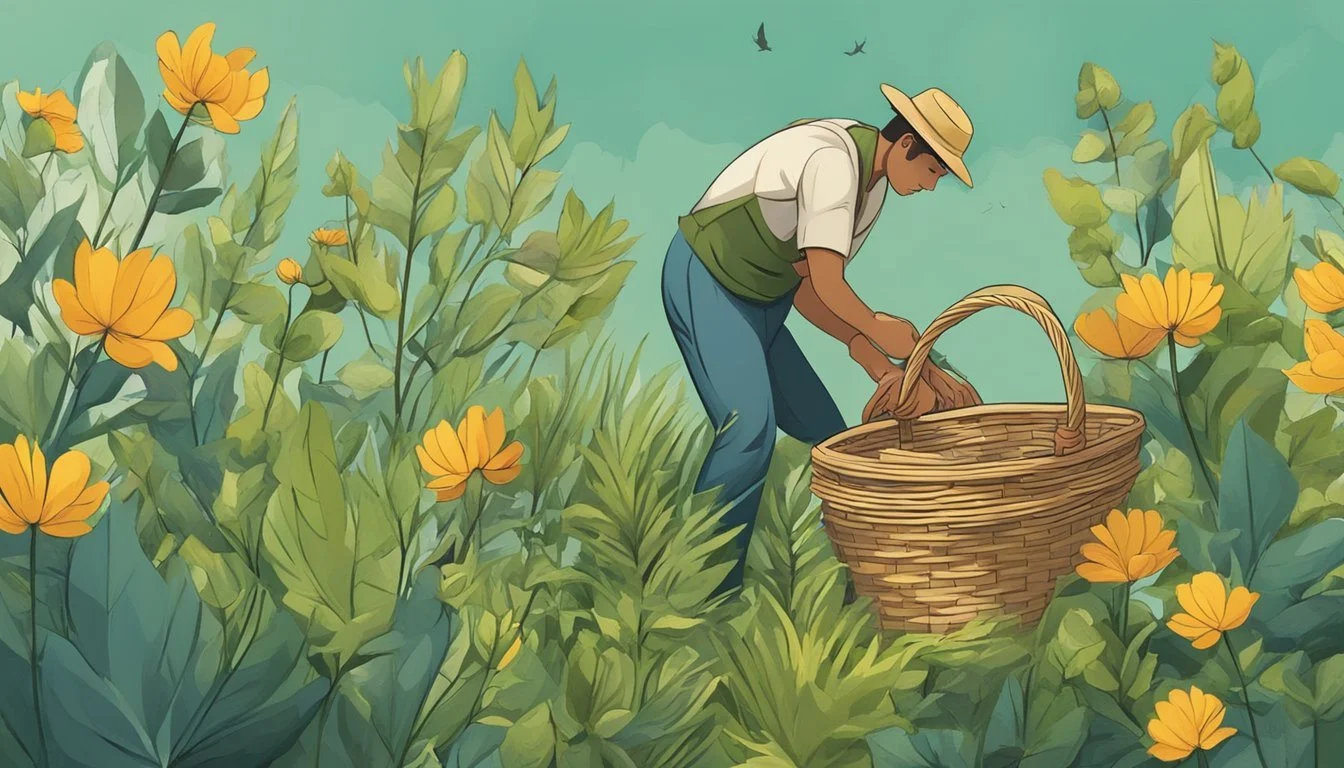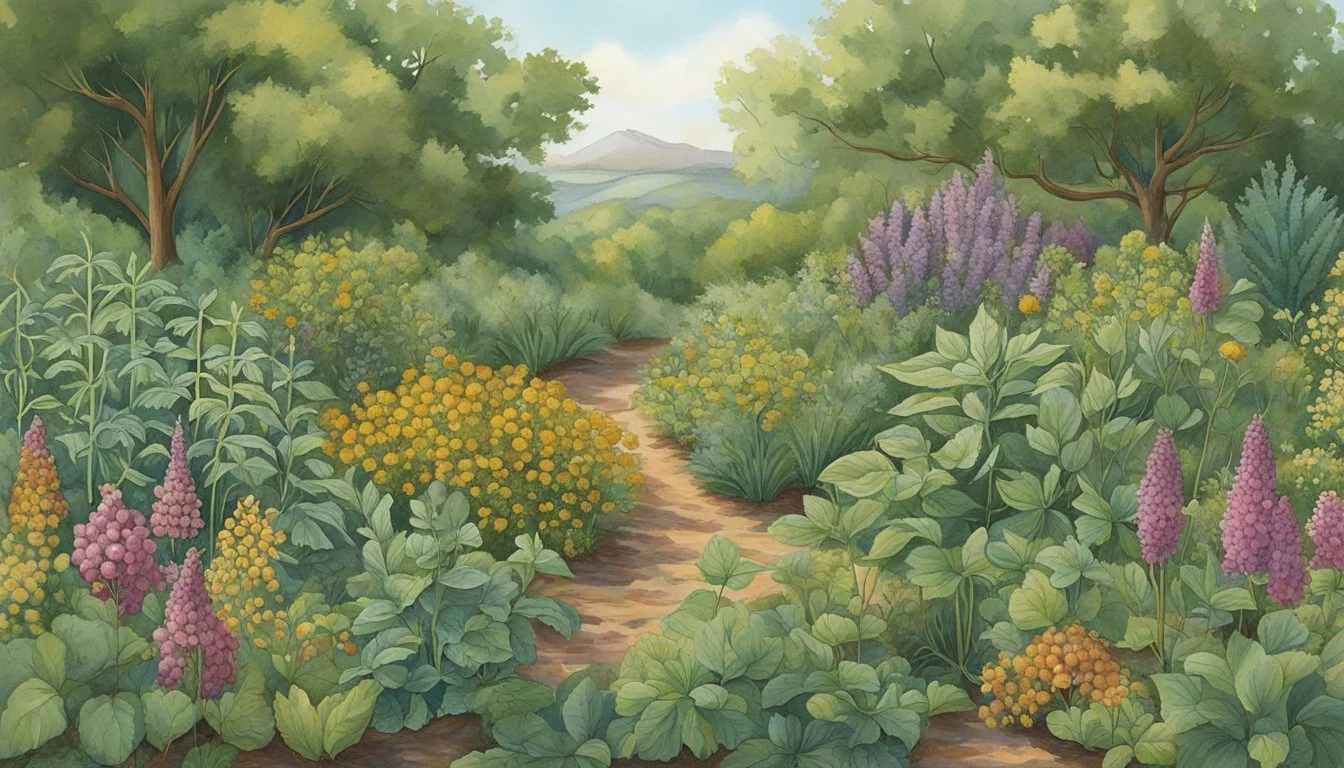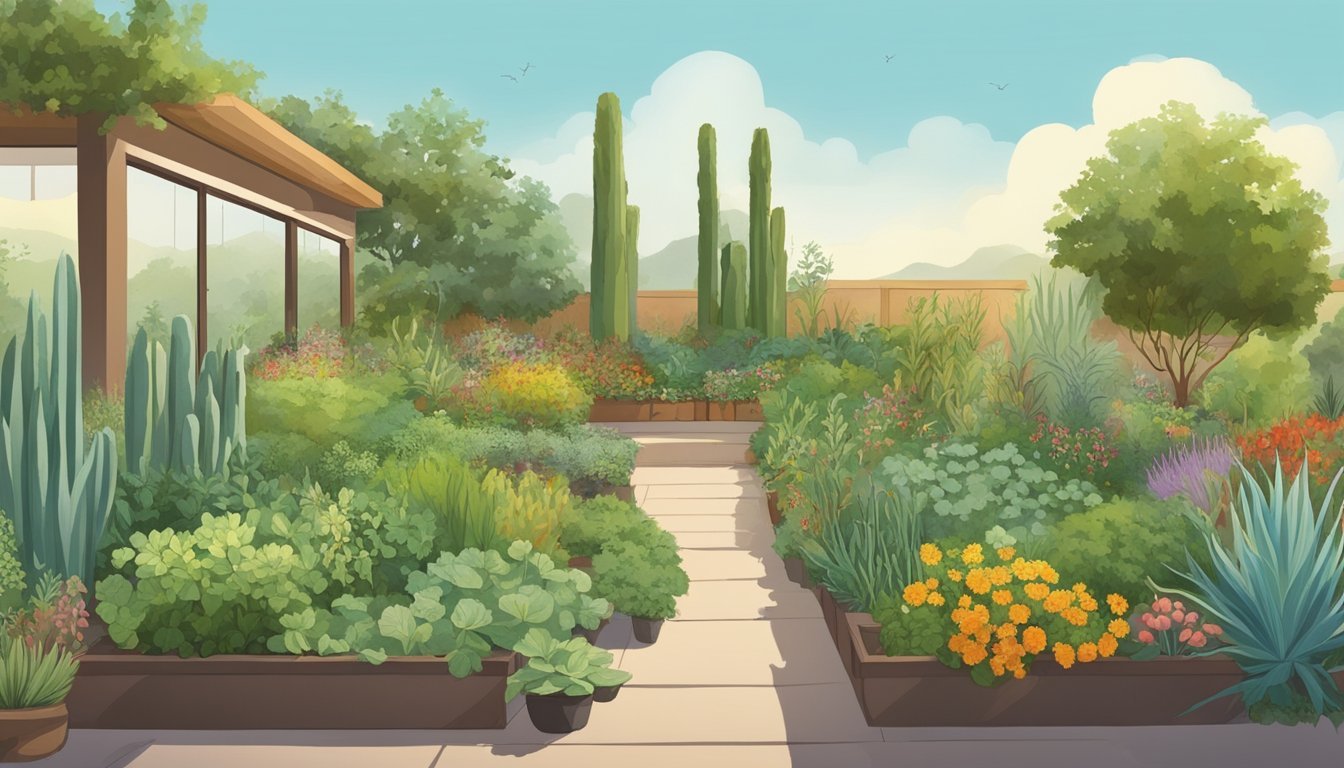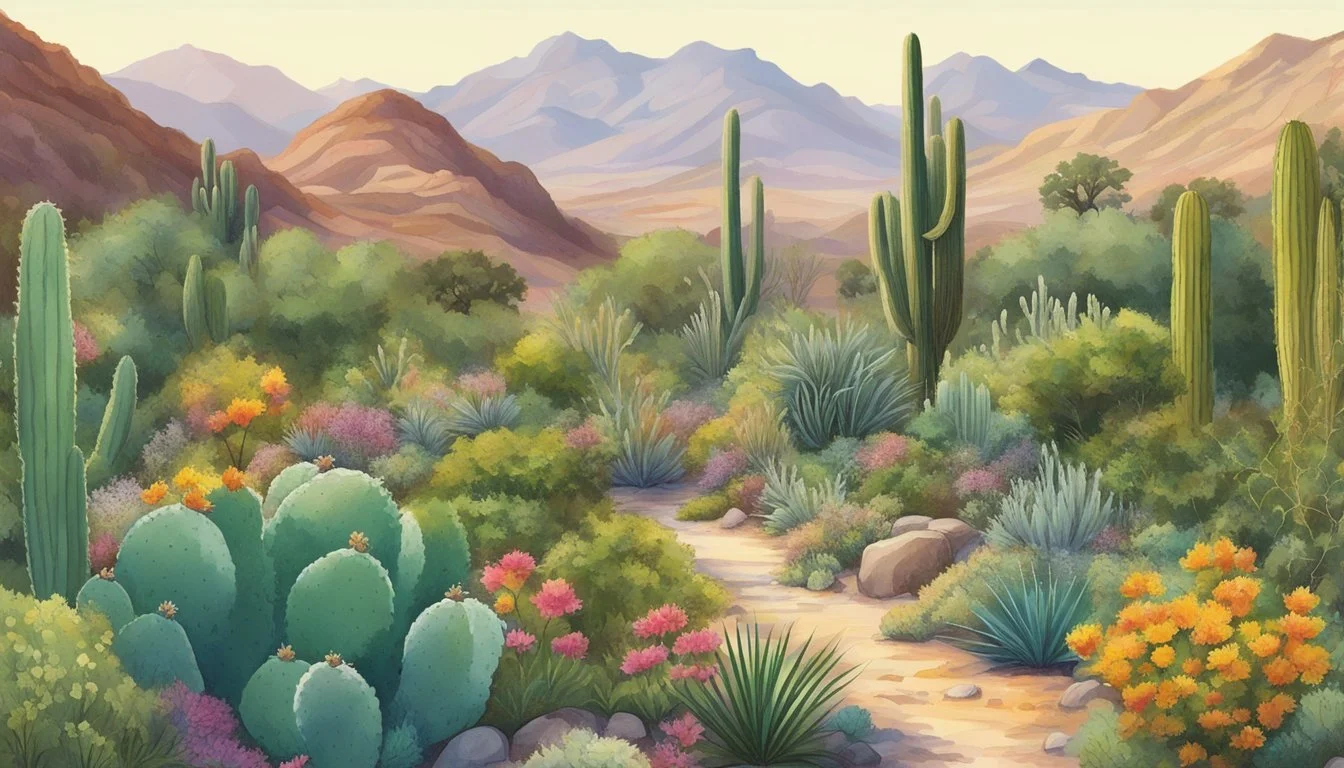South Central Native Edible Plants
Discovering Local Wild Foods
Exploring the rich tapestry of South Central native edible plants opens a world of natural flavors and nutritional benefits. With a landscape as diverse as Texas, one can find an array of wild plants that are not only safe to eat but also deeply rooted in the local heritage. Foraging for native plants like prickly pear cactus and dewberries offers a sustainable way to connect with the environment.
Prickly pear cacti thrive in the arid regions and are noteworthy for their edible fruit and pads. These versatile plants have been a staple in local diets for centuries due to their nutritional value. Similarly, dewberries, which resemble blackberries, offer a sweet and familiar taste that can be a delightful addition to various dishes.
Beyond these, there are countless other native edible plants scattered across South Central landscapes, each with its unique culinary uses. Big saltbush and varieties of wild onions (Allium) and Triteleia can provide interesting flavors and textures, making them excellent choices for home gardens and foraging enthusiasts.
Understanding South Central Native Edible Plants
South Central regions of the United States feature diverse ecosystems, each home to various native edible plants. These plants have been integral both ecologically and culturally, providing sustenance and medicinal benefits.
Ecology and Distribution
South Central ecosystems, including prairies, woodlands, and deserts, offer diverse habitats for native plants. Prickly Pear Cactus thrives in arid areas like Texas, providing both fruit and edible pads. Fertile prairie soils, rich in organic matter, support various drought-tolerant species.
Wild Onions (Allium Canadense) are found in woodland areas with moist, well-drained soils. American cranberry plants require cooler climates and acidic, moist soils. These conditions illustrate the varied ecological niches that sustain different edible plants in the region.
Historical Uses
Native Americans utilized local plants for food and medicine. Prickly Pear Cactus was a staple, its fruit consumed fresh or dried, and pads used in stews. Wild Onions provided flavoring and medicinal benefits. The diverse flora supported a robust diet and offered remedies for ailments.
Plants like Elderberry had selective edible parts while other parts remained toxic. Ethnobotanical knowledge ensured safety and efficacy in using these natural resources. This historical reliance on native plants showcases their importance in traditional practices.
Identifying Edible Plants
Understanding which plants are safe and nutritious requires knowledge about their unique characteristics. This section explores critical identification traits for leaves, flowers, berries, fruits, seeds, and nuts.
Leaves and Flowers
Leaves often provide the first clue in identifying a plant. Dandelion leaves grow in a basal rosette and are deeply lobed. Chickweed features small, paired leaves with tiny white flowers that have deeply divided petals.
Important identifiers include leaf shape, texture, and vein patterns. For example, dandelion leaves are jagged and have a milky sap when broken. When examining flowers, focus on color, shape, and arrangement. Dandelion flowers are bright yellow and composed of numerous tiny petals.
Plants like clovers have distinctive leaves and flowers, making them easier to identify. Familiarity with these traits can help distinguish between edible and non-edible varieties.
Berries and Fruit
Berries and fruits are often the most recognizable parts of a plant. Dewberries resemble blackberries, with dark, juicy berries growing on thorny vines. The toxic pokeweed also bears berries but can be distinguished by its red stems and clustered fruit.
Check for color, shape, and the plant's overall structure. For instance, prickly pear cactus bears bright red fruit called tunas, which are oval and covered in tiny spines.
Berries like mulberries grow on trees rather than bushes. They change from red to purple-black as they ripen. Knowing these details helps ensure safe foraging.
Seeds and Nuts
Seeds and nuts provide essential nutrients but often need correct identification to avoid toxicity. Acorns from oaks are distinguishable by their caps and smooth shells, while pecans have an elongated shell with distinct ridges.
Wild Sunflower seeds can be identified by their gray and white striped pattern and small size.
Learn to recognize pods, shells, and growth patterns. For example, walnuts have a green, fibrous husk that turns brown as it matures. Similarly, hickory nuts have hard, thick shells that require effort to access the edible part.
Knowledge of these characteristics ensures safe and effective foraging.
Foraging Techniques and Ethics
Responsible foraging ensures the sustainability of native edible plants and the safety of foragers. It involves a blend of knowledge, ethical practices, and safety precautions.
Sustainable Harvesting
Sustainable harvesting is essential to preserve plant populations for future generations. Foragers should adhere to the “one in twenty” rule, which suggests taking only 5% of a plant colony to ensure the plants can reproduce and thrive.
It is important to avoid overharvesting, especially of rare or slow-growing species. Rotating harvest sites can also prevent depletion of plant communities. Knowledge of each plant’s reproductive cycle helps determine the best time to harvest without hindering regrowth.
Before harvesting, foragers should ensure they are not in protected areas or lands where harvesting native plants is prohibited. Ethical foragers always prioritize conservation and leave no trace behind.
Safety and Avoiding Toxic Plants
Safety in foraging is paramount. Foragers must be adept at correctly identifying edible versus toxic plants. Many toxic plants resemble edible species, posing a significant risk if not properly identified. It is advisable to use multiple sources for plant identification, such as field guides, apps, and expert consultations.
Moreover, foragers should be aware of environments that might expose plants to pesticides or pollutants. Plants near roadsides, industrial areas, or treated lawns often accumulate harmful substances.
Wearing gloves and carrying first aid supplies can mitigate minor injuries during foraging. Understanding local poisonous plants ensures that foragers avoid species that could cause harm. Prudence and preparation can make foraging a safe and rewarding activity.
Practical Uses of Native Edibles
Native edible plants in the South Central region offer numerous practical uses, from nutritional benefits to culinary applications. These plants can be incorporated into daily meals, enhancing both flavor and health.
Nutritional Benefits
Native edibles like pawpaw, wild lettuce, and elderberries provide essential vitamins and minerals. For instance, pawpaw is rich in vitamin C, magnesium, and dietary fiber, making it an ideal addition to a balanced diet.
Elderberries, known for their antioxidant properties, can aid in boosting the immune system. Additionally, leaves from native passionfruit are high in several vitamins, contributing to overall wellness.
Incorporating these plants into everyday meals can significantly improve nutritional intake and support general health, especially when used in fresh salads and nutritious teas.
Culinary Preparations
Native plants such as Ilex vomitoria (Yaupon Holly) and wild cucumber (Melothria pendula) can be used in various dishes. Yaupon Holly leaves can be roasted to make a tea, similar to yerba mate.
Wild cucumber can be added to salads or pickled for an extra crunch. Pawpaw is excellent for making jams and jellies, while elderberries are used in syrups and desserts.
Passionfruit can be crafted into delightful desserts, and groundcherry can be transformed into flavorful jams or added to soups for a unique taste. Floridian wild edibles also offer versatility, from pesto made with native greens to nutrient-rich broths.
Gardening with Native Edibles
Gardening with native edible plants not only enhances your garden with local flora but also sustains regional wildlife. Proper planting and care can yield nutritious produce while inviting essential pollinators.
Planting and Care
To begin, select native plants suited to your soil and climate. Plants like purslane and dandelions thrive in a variety of conditions and require minimal care. Ensure the garden site receives adequate sunlight, ideally 6-8 hours daily.
Regular watering and irrigation are crucial, especially for plants requiring constant moisture, such as the American cranberry. Maintaining consistent soil moisture helps in better root development. It's beneficial to monitor soil pH and adjust accordingly, particularly for plants needing acidic conditions. Mulching aids in retaining soil moisture and suppressing weeds.
Prune plants periodically to encourage growth and remove dead parts. Fertilize with organic matter to support healthy growth. Always be mindful of each plant's unique requirements—some may need more water, while others prefer drier conditions.
Attracting Pollinators and Wildlife
Native edible plants often attract local pollinators like bees and butterflies. Plant flowers with vibrant colors and diverse bloom times to provide continuous nectar sources. Milkweed and Echinacea are excellent choices for attracting a variety of pollinators.
Creating a pollinator-friendly habitat involves adding water features and avoid using pesticides. These elements make the garden inviting for birds, insects, and other wildlife. Native plants offer seeds and berries that serve as food sources for these creatures, creating a balanced ecosystem.
Design the garden with shelter zones like bushes and trees to protect wildlife from predators. This strategy not only benefits local fauna but also augments the garden's productivity through natural pollination and pest control.
Common Edible Plants of South Central Region
South Central region offers a wealth of native edible plants that provide essential nutrients and flavor. These indigenous species include fruit-bearing plants, herbaceous varieties, and tree-based nut producers.
Fruit-Bearing Plants
Pawpaws (Asimina triloba) are native to South Central regions and offer creamy, tropical-flavored fruits. These oblong green fruits are rich in vitamins and can be eaten raw. They thrive in well-drained soils near riverbanks or forested areas.
Persimmons (Diospyros virginiana) produce sweet, orange fruits in the fall. These fruits become edible after they’ve ripened and softened, often requiring the first frost to remove their astringency. They grow well in a variety of soil types and are adaptable to different environments.
Dewberry is found in open fields and forest edges. Resembling blackberries, they are edible when fully ripe, offering a sweet flavor ideal for fresh eating or making preserves.
Herbaceous Plants
Wild Onion (Allium canadense) grows abundantly in South Central fields and meadows. These plants have a mild onion flavor and can be used similarly to cultivated onions in cooking. Both the bulbs and green stalks are edible.
Spiderwort (Tradescantia virginiana) features vibrant blue flowers and fleshy stems. The young leaves and shoots are edible and can be used in salads or lightly cooked. This hardy plant often grows in fields, woodlands, and roadsides.
Beautyberry (Callicarpa americana) produces clusters of bright purple berries that ripen in late summer. While somewhat astringent, they can be made into jellies or wines. These plants are common in open woods and thickets, and their leaves repel insects.
Tree and Nut Producers
Pecan (Carya illinoinensis) trees are native to the region and produce rich, buttery nuts highly valued for baking and snacking. They thrive in well-drained, fertile soils along rivers.
Blackberry (Rubus fruticosus) produces clusters of sweet, black fruits in midsummer. These berries grow on arching canes and are commonly found in fields, forest edges, and clearings. They are versatile, used fresh, in jams, or baked goods.
Elderberry (Sambucus canadensis) shrubs bear small, dark purple berries that are edible when cooked. Often used for syrups and medicinal purposes, they are found in moist areas such as stream banks and roadside ditches.
Preservation and Processing
Proper preservation and processing methods extend the shelf life of native edible plants. Key techniques include canning, preserving, drying, and storing to retain flavor and nutritional value.
Canning and Preserving
Canning native fruits and vegetables helps maintain their nutritional qualities. Common methods include making jam, jelly, and syrup.
Jam and jelly require boiling the fruit with sugar and pectin, while syrup involves a simpler process of boiling fruit juice with sugar. The Wild Plum (Prunus americana) and Morel Mushrooms (Morchella spp.) can be effectively turned into jam or syrup. These preserved foods can be stored for months and make use of seasonal bounty throughout the year.
Sterilization of jars and lids is crucial to prevent contamination. Always use a water bath or pressure canner to process jars, ensuring safety and extending shelf life. Label all containers with the date and type of preserve.
Drying and Storing
Drying is a cost-effective method suitable for many plants such as Purple Prairie Clover (Dalea purpurea) and certain types of edible flowers.
Air drying or using a dehydrator removes moisture, which prevents the growth of mold and bacteria. Dried plants should be crisp and brittle when done. Store dried products in airtight containers, kept in a cool, dark place to maintain their quality.
For long-term storage, consider vacuum-sealing dried items. This further reduces exposure to air and moisture. Proper storage conditions are essential; aim for stable temperatures and low humidity to keep dried goods in optimal condition.
Health Considerations and Benefits
Consumption of South Central native edible plants can confer numerous health benefits due to their high nutritional content, but it's also crucial to be aware of possible risks.
Medical and Health Benefits
Many South Central native edible plants provide significant health advantages. Broad Leaf Plantain is known for its anti-inflammatory properties and is rich in vitamins A, C, and K. It's used traditionally to treat wounds and skin conditions. Another common plant, Blue Vervain, has sedative and muscle relaxant properties, aiding in stress and anxiety relief.
Seeds and leaves of various native plants demonstrate high antioxidant activity. For instance, seeds can contain up to 84.8 mg TE/g ABTS antioxidant activity, which supports cellular health by combating oxidative stress. The presence of minerals such as iron and calcium in these plants contributes to overall nutritional benefits.
Risks and Cautions
Despite the benefits, there are risks involved with consuming wild plants. Some species may contain toxic compounds that can cause adverse reactions. For example, certain parts of a plant might be safe while others are harmful, so proper identification is crucial for safe consumption.
Overconsumption of certain vitamins or minerals found in these plants can lead to toxicity. For instance, excessive intake of vitamin A from plants could result in hypervitaminosis A, leading to symptoms like dizziness or nausea. Additionally, allergic reactions can occur, emphasizing the importance of moderation and awareness of individual sensitivities.
Proper preparation methods should be adhered to in order to mitigate potential health risks.
Educational Resources and Support
There are many educational initiatives aimed at supporting enthusiasts of South Central native edible plants. Below, various resources such as workshops, courses, and online materials are outlined to provide useful knowledge and support.
Local Workshops and Courses
Local workshops and courses can be found across various institutions. These often cover topics ranging from plant identification to sustainable harvesting techniques.
County Extension Offices, such as those part of the UF/IFAS Extension, frequently offer free or low-cost classes. Participants can expect hands-on experience and expert insights.
Botanical gardens and nature centers also provide educational programs. They often host seasonal workshops, teaching practical skills and fostering community engagement.
Additionally, local foraging groups sometimes organize outings and workshops. These events offer firsthand experience of edible plants and their habitats.
Extension Services and Online Material
Extension Services provided by organizations like UF/IFAS offer a wealth of online materials. These resources include detailed guides, databases, and fact sheets that cater to both beginners and advanced foragers.
Websites of County Extension Offices often feature comprehensive information on native plants. These sites may include interactive plant identification tools and best practices for conservation.
Online courses and webinars are also available, often covering a wide array of topics such as plant propagation and culinary uses. These flexible options allow individuals to learn at their own pace.
Several organizations, including university extensions, provide free and accessible knowledge. This can be in the form of PDF guides, instructional videos, and blog articles, ensuring that valuable information is within reach for all enthusiasts.
Future Perspectives and Conservation
The future of South Central native edible plants hinges on maintaining their abundance and promoting their conservation. There is a pressing need to address both the environmental impact and the current conservation efforts surrounding these species.
Environmental Impact
South Central native edible plants play a crucial role in their ecosystems. They contribute to biodiversity and provide essential food sources for various species. Asteraceae and Fabaceae are among the families with the highest numbers of edible species, supporting both wildlife and human diets. The decline of these plants due to habitat loss and climate change threatens the overall health of the region's ecosystems.
Climate change poses a significant threat, altering habitats and reducing the viability of many native edibles. Increased temperatures and shifting precipitation patterns can result in species that are less resilient to changes in their environment. Protecting the natural habitats of these plants is vital for maintaining their abundance and ensuring their availability for future generations.
Conservation Efforts
Efforts to conserve South Central native edible plants are multifaceted. Local and international organizations are working to promote the importance of these species. Conservation programs focus on protecting natural habitats, restoring degraded lands, and reintroducing rare species into their native environments.
Ethnobotanical studies and documentation are also critical. These efforts help to preserve traditional knowledge about native edibles and their uses. Furthermore, educating the public about the importance of these plants can garner support for conservation initiatives. Policies aimed at sustainable use and protection of native ecosystems are essential to prevent the loss of these valuable plant species.
Collaborative projects between governments, NGOs, and local communities can enhance conservation success. By combining scientific research with traditional practices, it is possible to develop sustainable methods for harvesting and utilizing native edibles without compromising their populations.










